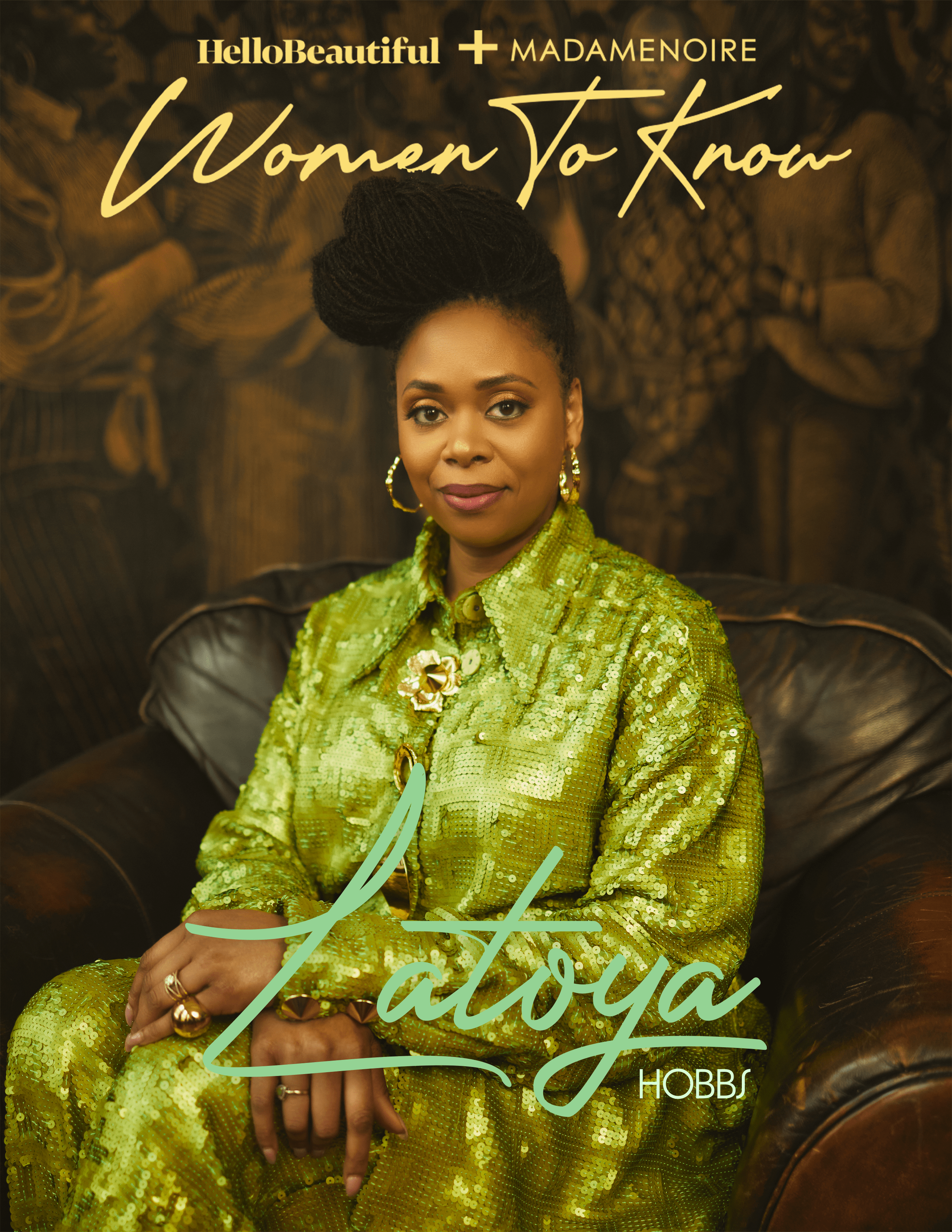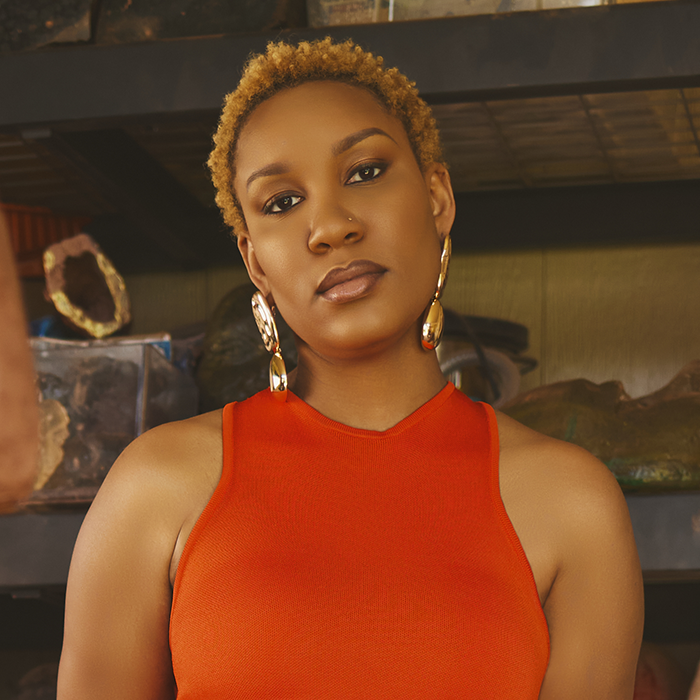


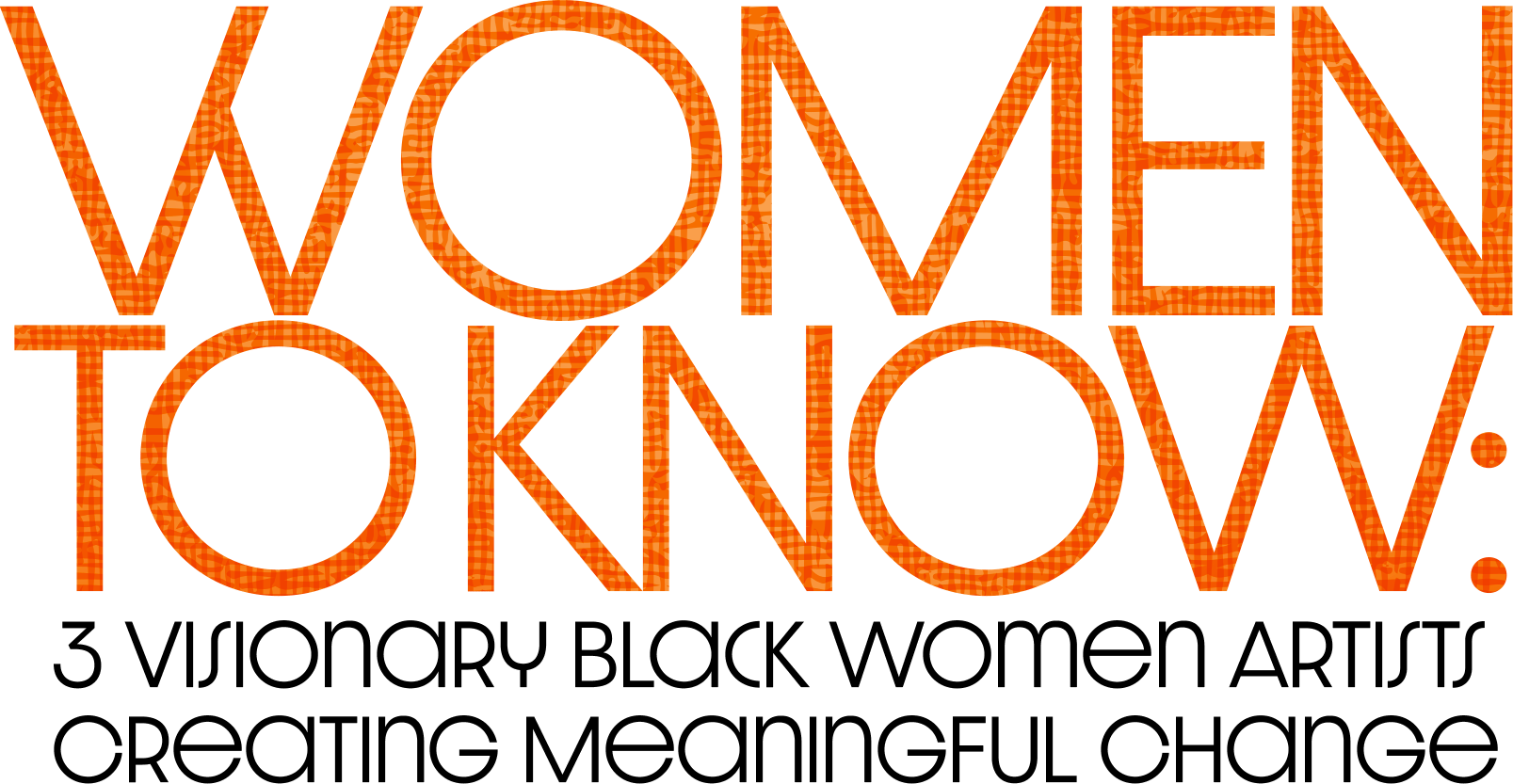
At present, the world feels heavy — rife with uncertainty and an air of gloom. It’s tempting to retreat, to shrink into our private corners. But what good does that do any of us? It’s in these trying moments that community matters most and so does our commitment to shaping the world we want to see. And who better to help us navigate these murky waters than Black artwork from our favorite Black artists?
For this year’s Women to Know, we turn our gaze toward the visual luminaries we’re affectionately calling Modern Mavericks. Our cover subjects — LaToya Hobbs, Murjoni Merriweather, and Jewel Ham — are powerful forces, each with a singular style that captivates the mind and lingers in the spirit. Whether through carvings, sculpture, or paint, their Black artwork guides us through layered expressions of the Black experience. Their creations reaffirm what so many of us already know: We’re not a monolith; we’re a deeply resonant multiverse.
This year, we’ve expanded our spotlight beyond the cover to include even more women making waves in the art world with their Black artwork. We could go on and on because there is no shortage of brilliance in our community.
And in a time when many would rather erase us and our histories, we’re deeply grateful to be seen and exalted.


At present, the world feels heavy — rife with uncertainty and an air of gloom. It’s tempting to retreat, to shrink into our private corners. But what good does that do any of us? It’s in these trying moments that community matters most and so does our commitment to shaping the world we want to see. And who better to help us navigate these murky waters than artists?
For this year’s Women to Know, we turn our gaze toward the visual luminaries we’re affectionately calling Modern Mavericks. Our cover subjects — LaToya Hobbs, Murjoni Merriweather, and Jewel Ham — are powerful forces, each with a singular style that captivates the mind and lingers in the spirit. Whether through carvings, sculpture, or paint, their Black artwork guides us through layered expressions of the Black experience. Their creations reaffirm what so many of us already know: We’re not a monolith; we’re a deeply resonant multiverse.
This year, we’ve expanded our spotlight beyond the cover to include even more women making waves in the art world. We could go on and on because there is no shortage of brilliance in our community.
And in a time when many would rather erase us and our histories, we’re deeply grateful to be seen and exalted.

Aliquam posuere libero nec nunc rhoncus porta. Phasellus faucibus est eu dapibus interdum. Aliquam maximus orci id semper ultrices. Aliquam sodales ut leo sit amet interdum. In luctus nisl id nulla interdum, vel imperdiet est placerat. Proin sit amet neque porttitor, dapibus quam vel, consequat enim. Curabitur sagittis finibus lobortis.


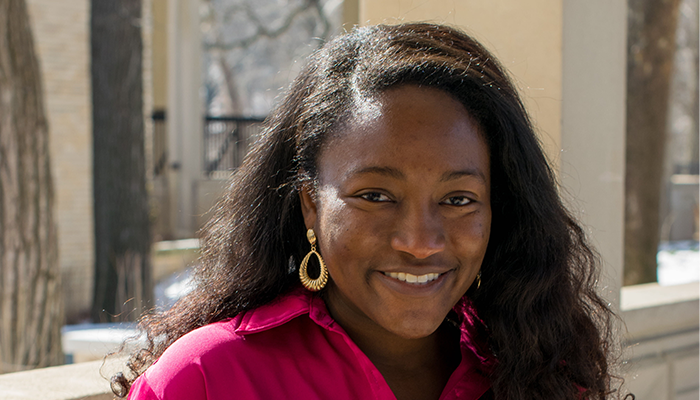
LAUREN YOUNGE
Lauren Younge
Lauren Younge is an artist that loves to share her work and knowledge with others. The abstract artist was a teacher for four years in St. Louis before deciding to pursue her art career full-time and “is drawn to abstract art because it allows her to express herself more freely.
The foundation she was given at a young age allowed her to embrace her artistic nature and also openly teach others what the magic of art had given her throughout her life.
“I am blessed with an amazing support system, specifically my mom who made sure to put me in creative camps and classes whenever I wasn’t in school,” Younge shares with Hello Beautiful.
“She has always encouraged and championed my creative interests. Another part of my upbringing I can attribute to having such an influence on my artistic journey is the school district that I grew up in where I had many great art teachers that helped spark my initial interest in art,” she says.
As with many artists, Younge has a sentiment that she hopes people take from her work, albeit an admittedly simple one. “My goal with my art is simple really. I aim to spread joy and brighten people’s lives with my paintings,” she reveals.
“From my color choices, to the movement and patterns, my work is open to people’s interpretation. Painting is my main stress reliever, and allows me to feel renewed. With my art I aim to create a similar feeling for the viewer,” Younge says.
For all the young Black girls coming after her, she has sage advice and wisdom that she hopes will inspire the next generation of fearless creators.
“To the Black girls out there wanting to pursue art – know that there is a place for your art. Never stop learning and honing in on your craft. Never be afraid to ask for help. Never be afraid to ask questions to fellow artists. Continue creating for yourself,” Younge says.
She continues, adding “I’ve found this helps me to remain inspired and wanting to create. For those creatives hoping to create to sell – it can be hard sometimes to stay inspired if the focus is to only make a profit.”
“My last piece of advice is to find your “why” for creating and keep it close to your heart so you can better combat those feelings of imposter syndrome – you are creative and your art has value!,” Younge shares.
FOLLOW Lauren Younge ON SOCIAL
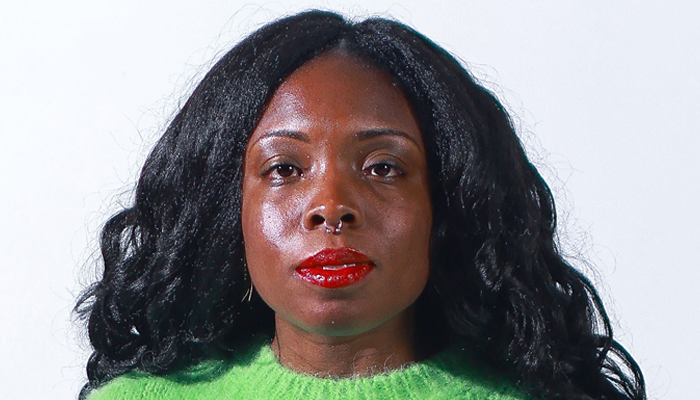
CHRISTINE MILLER
Christine Miller
New York-based watercolor painter Christine Miller is committed to “exploring how anti-Black propaganda and stereotypes permeate American life” through her work and her voice as a Black woman in the art world is needed now more than ever.
Miller, who holds a degree of Fine Art and Geography from Hunter College and a degree in Textile & Surface Design from the Fashion Institute of Technology, knows the significance of being a Black female artist, but doesn’t want that to be the sole driving force of how her work is received.
“I think at times there is an expectation to make certain work as a Black woman or to show up in a certain way,” she tells Hello Beautiful in an exclusive interview.
“My work confronts some dark histories because that’s what I’m interested in. I appreciate when people give feedback that they feel the maternal and feminine energy with the work – but even that my world of femininity can be completely different than someone else’s. I’ve come to accept to center my priorities with the work and whoever wants to engage in my world can engage and if they don’t, they don’t,” Miller says.
When asked about her experience navigating the art world as a Black woman, Miller admits she’s filled with conflicting emotions. “It’s good and grueling at the same time. Good because I’ve been so pleasantly surprised in a number of different ways and also disappointed,” she says.
“It burns me when I’ve seen men and white people get immense amount of praise even if they aren’t making good work. The level of delusion can be infuriating at times. It can be a lonely experience but when you find your tribe and community it’s so enriching beyond measure. It truly is an experience-by-experience case,” Miller adds.
Nevertheless, the artist has a clear vision for what she hopes art lovers take from her work.
“I really want people to learn, question everything, have the desire to shake some s—t up in their lives and in this world, fight back and as a top priority question the way the Black body is being used and shown in mass consumer culture.”
FOLLOW CHRISTINE MILLER ON SOCIAL
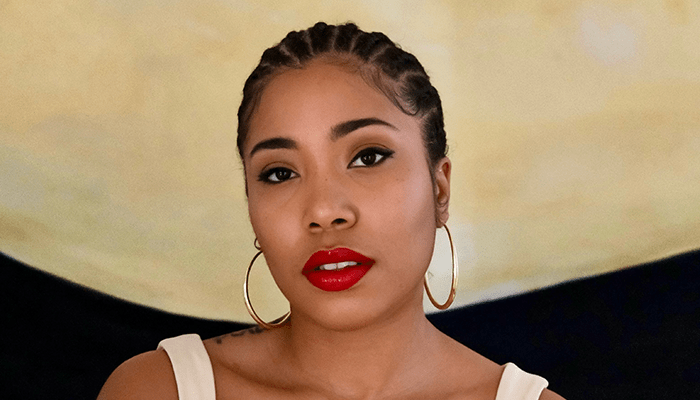
QUIANA PARKS
Quiana Parks
Quiana Parks doesn’t restrict herself to the confines of one singular art form, instead infused her artistic creations with a variety of sources that exude the vibrancy of her African American and Jamaican heritage.
Regularly using “a dynamic blend of oil pigment sticks, charcoal, and pencil on paper and canvas,” Parks’ art showcases the New Jersey native’s “signature approach to mixed media on paper and wood.”
Parks tells Hello Beautiful of her artistic journey thus far, specifically as it relates to the Black woman’s experience in America. When asked about the themes she finds herself returning to in her work, she’s clear.
“Grief, memory, spirituality, transformation—especially through the lens of Black womanhood,” Parks says. “Water is a big one for me too. I think about it a lot. I’ve cried oceans, but I’ve also been healed by them. Sound is a throughline too—because sometimes a hum, a moan, or a beat can hold more truth than words.”
The artist, who is also a successful DJ, knows that her work will be viewed a certain way because she is a Black woman, but she doesn’t let that place any restrictions on her.
“Being a Black woman means my work is always seen through that lens—whether I want it to be or not,” Parks tells us. “But it also means I create from a place of layered truth. There’s joy, but also weight. There’s legacy and loss. There’s always a little extra resistance—but also a whole lot of resilience. I paint and DJ with that in mind. My identity isn’t a trend. It’s a truth. A frequency.”
She continues, telling us how she moves throughout the art world as a woman of color. “There’ve been moments where I felt invisible and moments where I felt deeply seen,” Parks says.
“I’ve had to advocate for myself in rooms where folks didn’t get it. But I stopped trying to be understood by people who don’t speak my language. I built my own space. I show in my own loft. I curate the vibe myself. That’s freedom to me,” she adds.
As for what she wants people to feel or take away from her work, Parks shares a hope for a feeling of softness and security.
“I hope they feel softened. Held. Reminded. Like they’re not alone in their grief or their glow. My work isn’t always easy, but it’s honest. And I hope it gives people permission to feel the hard stuff without shame—and to celebrate the sacred in their everyday,” she says.
FOLLOW QUIANA PARKS ON SOCIAL
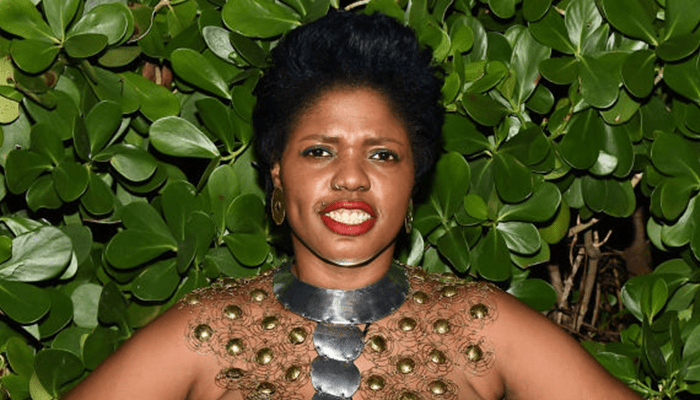
EBONY PATTERSON
Ebony Patterson
Born in Kingston, Jamaica, artist Ebony Patterson is abundantly clear on who she is and what she wants her work to represent, with an unapologetic confidence that makes her work feel all-encompassing.
“I aim to elevate those who have been deemed invisible/un-visible as a result of inherited colonial social structures, by incorporating their words, thoughts, dress, and pageantry as a tactic to memorialize them. It is a way to say: I am here, and you cannot deny me,” Patterson proudly proclaims.
The rich, vibrant colors of her art initially draw you in, but it’s the messages surrounded by the surface beauty where Patterson aims to truly connect. “Using the paradoxical to convey important messages, she draws on far reaching vernaculars of art history, religious imagery and popular culture.”
Patterson uses the beauty of her art as a means to trap viewers “physically, psychologically and emotionally” in her compositions. By purposely “shrouding figures almost completely, she creates a presence of bodies no longer there.”
By artistically “juxtaposing visibility and invisibility, death and survival,” Patterson’s art is “filled with an overwhelming sense of hope.”
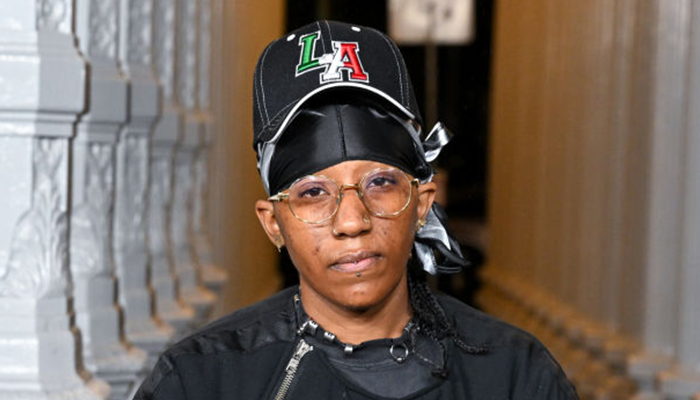
LAUREN HALSEY
Lauren Halsey
The history of South Central, Los Angeles, is more than just the place where Lauren Halsey grew up, its robust culture is also a large influence in her work that celebrates the Black experience and how it has evolved throughout the decades in the community and penetrated by outside sources.
The Yale graduate’s artistic vision and works “creates immersive installations that bridge sculpture and architecture, and graphically maximalist collages that blend real and imagined geographies.”
Halsey amplifies the richness of Black culture in South Central by using local vernacular as a source of her work, through the use of “flyers, murals, signs, and tags—icons of pride, autonomy, initiative, and resilience.”
Her art also speaks to the bigger picture plaguing the South Central community and other Black neighborhoods like it throughout the country, as she uses her art as “a form of creative resistance to the forces of gentrification.”
In addition to South Central inspiration, Halsey is “also inspired by the Afrofuturist aesthetics of funk music and the utopian architecture proposed in the 1960s by Archigram and Superstudio, and “employs the iconography of ancient Egypt as a means of reclaiming lost legacies.”
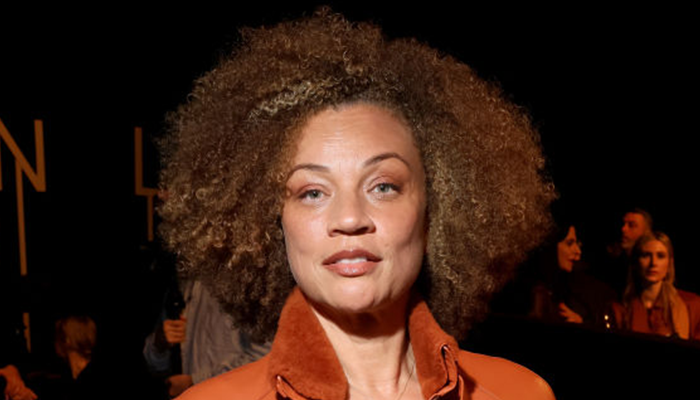
CALIDA RAWLES
Calida Rawles
Spelman and New York University graduate Calida Rawles, is an artist who proudly utilizes her work as a form of commentary on the black experience, which is highlighted in her recent work that “employs water as a vital, organic, multifaceted material, and historically charged space.”
Rawles uses water in her artistic expression as a signifier for “both physical and spiritual healing as well as historical trauma and racial exclusion, using duality to envision new space for Black healing, and reimagining her subjects beyond racialized tropes.”
Born in Wilmington, Delaware, and currently residing in Los Angeles, Rawles is inspired by Black women and their place, perception and acceptance in society is major fuel for her creations.
Her choice to depict Black women wearing white in an ethereal manner, is a direct contrast to how they are often perceived in modern America.
“Influenced by contemporary Black female writers and their approaches to intersectionality, Rawles depicts Black women and girls cloaked in white gowns floating in a realm of calmness and spiritual relief from their identity politics and its undercurrent of microaggressions, colorism, and generational trauma.”
FOLLOW CALIDA RAWLES ON SOCIAL



